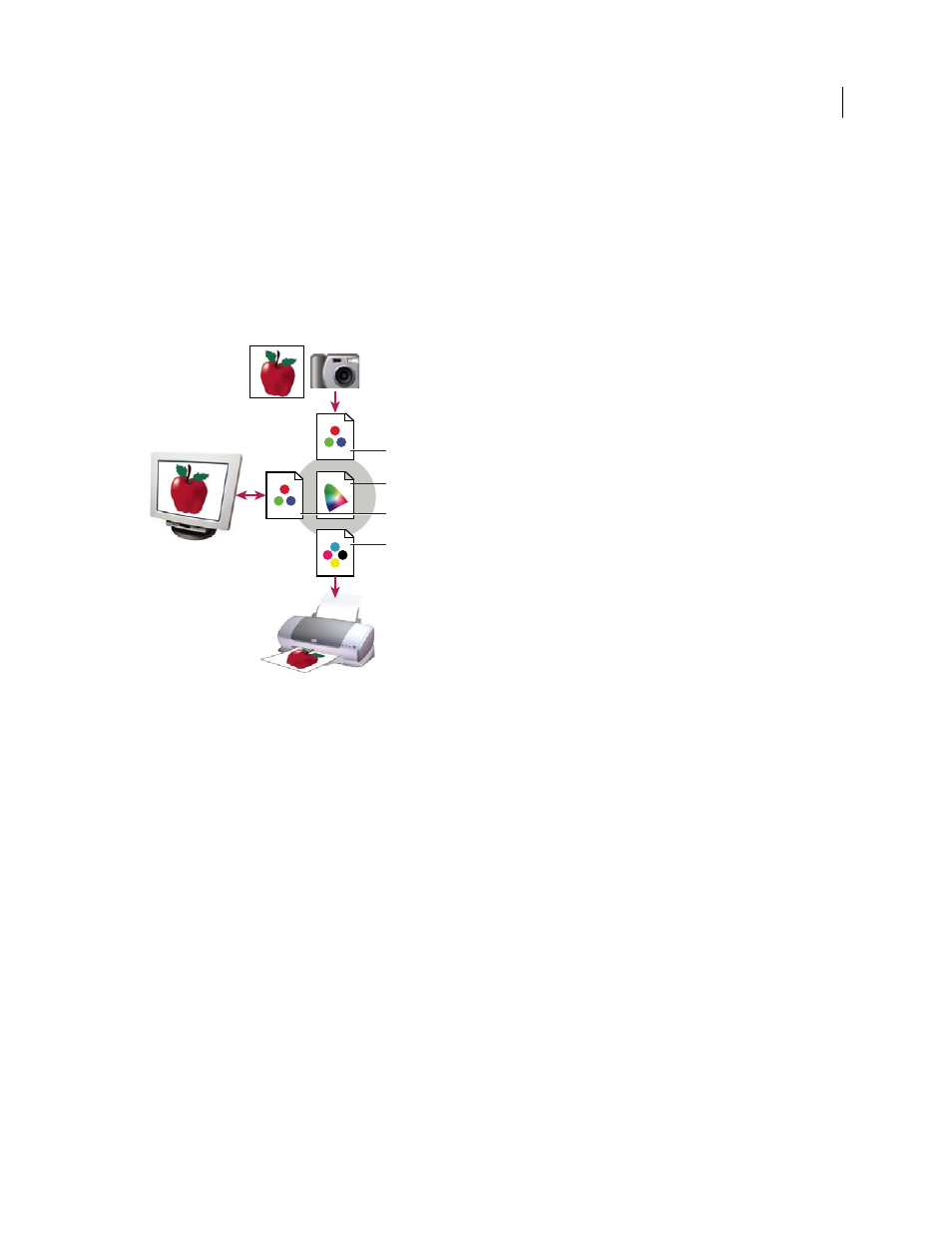About monitor calibration and characterization – Adobe Illustrator CS4 User Manual
Page 151

144
USING ADOBE ILLUSTRATOR CS4
Color management
Document profiles
Define the specific RGB or CMYK color space of a document. By assigning, or tagging, a document
with a profile, the application provides a definition of actual color appearances in the document. For example, R=127,
G=12, B=107 is just a set of numbers that different devices will display differently. But when tagged with the Adobe
RGB color space, these numbers specify an actual color or wavelength of light–in this case, a specific color of purple.
When color management is on, Adobe applications automatically assign new documents a profile based on Working
Space options in the Color Settings dialog box. Documents without assigned profiles are known as untagged and
contain only raw color numbers. When working with untagged documents, Adobe applications use the current
working space profile to display and edit colors.
Managing color with profiles
A. Profiles describe the color spaces of the input device and the document. B. Using the profiles’ descriptions, the color management system
identifies the document’s actual colors.
C. The monitor’s profile tells the color management system how to translate the document’s numeric
values to the monitor’s color space.
D. Using the output device’s profile, the color management system translates the document’s numeric values
to the color values of the output device so the correct appearance of colors is printed.
See also
Calibrate and profile your monitor
Letting the printer determine colors when printing
Obtaining custom profiles for desktop printers
About monitor calibration and characterization
Profiling software can both calibrate and characterize your monitor. Calibrating your monitor brings it into
compliance with a predefined standard—for example, adjusting your monitor so that it displays color using the
graphics arts standard white point color temperature of 5000°
K (Kelvin). Characterizing your monitor simply creates
a profile that describes how the monitor is currently reproducing color.
Monitor calibration involves adjusting the following video settings:
Brightness and contrast
The overall level and range, respectively, of display intensity. These parameters work just as
they do on a television. A monitor calibration utility helps you set an optimum brightness and contrast range for
calibration.
A
B
C
D